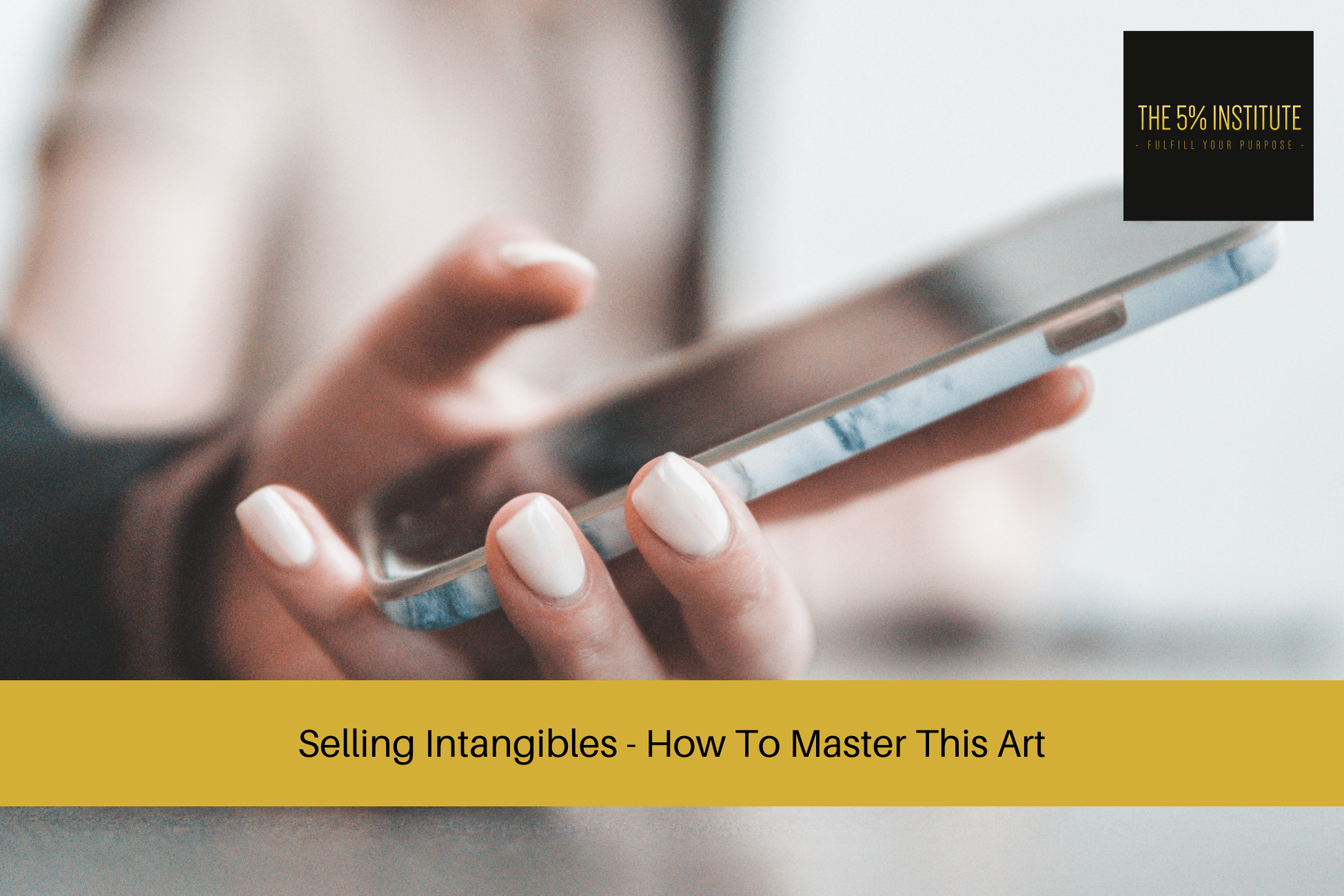
Selling Intangibles – How To Master This Art
In today’s fast-paced world, where digital platforms dominate, the art of selling has evolved tremendously. With the rise of e-commerce and online marketplaces, businesses have shifted their focus to not only selling tangible products but also intangible ones. Selling intangibles, such as services, experiences, and emotions, requires a different approach and a unique set of skills.
In this article, we will explore the intricacies of selling intangibles and delve into the secrets of successful persuasion and emotional connection.
The Psychology of Persuasion
Selling intangibles requires a deep understanding of human psychology and the art of persuasion.
Emotions play a significant role in decision-making, and successful salespeople tap into these emotions to connect with their potential customers.
By appealing to feelings and desires, they create a sense of urgency and importance around the intangible offerings.
One powerful tool in the sales arsenal is the concept of social proof.
When potential customers see others benefiting from a service or experience, they are more likely to trust and follow suit.
Testimonials, case studies, and success stories can effectively showcase the value of intangible products.
Additionally, creating a sense of scarcity and urgency can drive action.
Limited-time offers or exclusive deals can motivate customers to act quickly, fearing they might miss out on something valuable.
Building Emotional Connections
Unlike tangible products, intangibles are often associated with emotions and experiences.
Successful sellers understand the importance of building emotional connections with their audience.
Storytelling is a powerful technique that can evoke emotions, helping potential customers relate to the offering on a personal level.
Understanding your target audience is crucial for effective emotional connection.
Tailoring your message to resonate with their needs, aspirations, and pain points can foster a deeper bond and trust.
Moreover, establishing credibility and trust is essential when selling intangibles.
Customers need to feel confident that they are making the right choice.
Sharing success stories, certifications, and customer reviews can build credibility and instil confidence.
Crafting Compelling Offers
Communicating the value of intangible products is often more challenging than presenting tangible ones.
Sales professionals must focus on how the intangible will positively impact the customer’s life or business.
Highlighting unique selling points and explaining how the offering addresses specific pain points is vital.
Personalization is another key aspect when crafting offers.
Tailoring solutions to match individual needs demonstrates attentiveness and dedication to customer satisfaction.
Additionally, offering guarantees can alleviate fears and concerns about making the wrong decision.
Money-back guarantees or satisfaction promises show that you stand behind your intangible product.
The Role of Content Marketing in Selling Intangibles
Content marketing plays a pivotal role in selling intangibles.
Creating valuable and relevant content allows potential customers to understand the benefits of intangible offerings better.
Leveraging social media platforms can significantly expand the reach of your message.
Engaging content, captivating visuals, and interactive elements can spark interest and initiate conversations.
Moreover, incorporating video marketing can be highly impactful.
Videos provide an opportunity to connect with the audience on a personal level and showcase the intangible in action.
Nurturing Customer Relationships
Customer retention is crucial when selling intangibles.
Exceptional customer service is vital to building long-lasting relationships.
Promptly addressing concerns and going above and beyond to exceed expectations can create loyal customers.
The art of upselling and cross-selling can also contribute to customer satisfaction and increased revenue.
By offering complementary intangible products that enhance the customer’s experience, you add value to their initial purchase.
Feedback is invaluable in improving and refining intangible offerings.
Requesting and utilizing customer feedback allows you to understand their needs better and make necessary improvements.
Overcoming Objections and Handling Rejections
In the sales process, objections and rejections are inevitable.
Successful salespeople actively listen to customer concerns and offer solutions that address these objections effectively.
Reframing objections as opportunities to educate the customer can shift the perspective positively.
Demonstrating empathy and understanding shows that you genuinely care about their needs.
Handling rejections gracefully is equally important.
Maintaining a positive attitude and leaving the door open for future opportunities can leave a lasting impression.
The Future of Selling Intangibles
The landscape of selling intangibles is continuously evolving.
Embracing technological advancements can streamline the sales process and improve customer experiences.
The integration of artificial intelligence and automation can enhance personalization and efficiency.
However, it is crucial to strike a balance between technology and the human touch, as the latter is what creates emotional connections.
Selling Intangibles – Conclusion
Selling intangibles requires a unique set of skills and approaches compared to selling tangible products.
Understanding human psychology, mastering the art of persuasion, and building emotional connections are key elements of successful selling.
By crafting compelling offers, utilizing content marketing, and nurturing customer relationships, businesses can effectively sell intangible products and create loyal, satisfied customers.
Selling intangibles is not without its challenges, but with the right strategies and dedication, sales professionals can thrive in this ever-changing landscape.
Selling Intangibles FAQs
What are intangible products?
Intangible products are offerings that cannot be physically touched but provide value through services, experiences, or emotions.
How important is emotional connection in selling intangibles?
Emotional connection plays a vital role in selling intangibles as it allows customers to relate to the offering on a personal level, increasing the likelihood of making a purchase.
How can I craft compelling offers for intangible products?
To craft compelling offers, focus on communicating the value of the intangible, personalize solutions, and offer guarantees to instil confidence in potential customers.
Why is content marketing essential for selling intangibles?
Content marketing allows businesses to showcase the benefits of intangible offerings, engage with potential customers, and build trust and credibility.
How can I overcome objections and handle rejections in the sales process?
Actively listen to customer concerns, reframe objections as opportunities to educate, and handle rejections gracefully while maintaining a positive attitude.
Want To Close Sales Easier?
Are you committed to closing sales a lot easier, and consistently?
If so, you should check out our self-paced and affordable online sales training program; The 5% Sales Blueprint.
It’ll give you everything you need to close sales consistently.
To learn more, simply click on the link below for more information.
Our Online Sales Training Program – The 5% Sales Blueprint.



